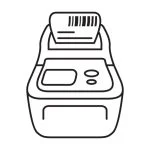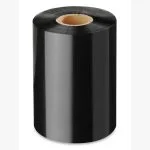How to Maximize Efficiency with Thermal Transfer Label Printers: Top Tips and Best Practices
Thermal transfer label printers are essential tools in various industries for producing durable and high-quality labels. These printers work by using heat to transfer ink from a ribbon onto the label material, creating long-lasting prints that can withstand harsh environments. To ensure that your thermal transfer label printer operates at peak efficiency and produces optimal results, it’s important to follow certain tips and best practices. This article will cover key areas such as maintenance, ribbon selection, material compatibility, and operational techniques to help you get the best performance from your thermal transfer label printer.
Understanding Thermal Transfer Printing
Before diving into the tips and best practices, it’s important to understand how thermal transfer printing works. Unlike direct thermal printing, which uses heat-sensitive paper, Thermal transfer label printers uses a ribbon coated with ink. The printer’s thermal print head heats specific areas of the ribbon, transferring the ink to the label material. This method produces highly durable labels that are resistant to fading, moisture, chemicals, and abrasion.
Tips and Best Practices
Regular Maintenance
Regular maintenance is crucial for ensuring the longevity and performance of your thermal transfer label printer.
- Cleaning the Print Head
The print head is one of the most critical components of a thermal transfer printer. It should be cleaned regularly to remove any residue or debris that could affect print quality. Use isopropyl alcohol and a lint-free cloth to gently clean the print head according to the manufacturer’s instructions.
- Inspecting and Replacing Worn Parts
Regularly inspect other components such as rollers and platens for wear and tear. Replace any worn parts to maintain consistent print quality and prevent potential damage to the printer.
Selecting the Right Ribbon
Choosing the appropriate ribbon is essential for achieving the best print results.
Ribbon Types
There are three main types of ribbons used in thermal transfer printing:
– Wax Ribbons : Suitable for general-purpose labeling on paper materials. They offer good print quality at a lower cost but have limited resistance to smudging and scratching.
– Wax/Resin Ribbons : A combination of wax and resin, these ribbons provide better durability and are suitable for printing on coated paper and some synthetic materials.
– Resin Ribbons : These ribbons offer the highest durability and are ideal for printing on synthetic materials such as polyester and polypropylene. They are resistant to chemicals, heat, and abrasion.
Ribbon Width and Length
Ensure that the ribbon width matches the width of the labels being printed to prevent wastage and ensure proper coverage. Additionally, use ribbons of appropriate length to minimize the frequency of ribbon changes, especially for high-volume printing.
Matching Labels and Ribbon Compatibility
Using the right combination of labels and ribbons is key to achieving optimal print quality and durability.
Material Compatibility
Ensure that the label material is compatible with the chosen ribbon type. For example, use resin ribbons with synthetic labels for applications requiring high durability, such as outdoor labeling or chemical exposure.
Adhesive Properties
Consider the adhesive properties of the labels to ensure they stick well to the intended surfaces. Different applications may require different adhesive strengths, such as removable, permanent, or high-tack adhesives.
Optimizing Printer Settings
Proper printer settings can greatly influence the quality and efficiency of your printing process.
Print Speed and Darkness
Adjust the print speed and darkness settings to achieve the desired print quality. Higher print speeds may reduce print quality, so find a balance that meets your requirements. Similarly, adjusting the darkness setting can ensure optimal ink transfer without overloading the print head.
Label Alignment and Calibration
Ensure that the labels are correctly aligned in the printer. Perform regular calibration checks to maintain accurate label positioning and avoid misprints.
Environmental Considerations
The environment in which the printer operates can affect its performance and the quality of the printed labels.
Temperature and Humidity
Maintain a stable temperature and humidity level in the printing area. Extreme conditions can affect the adhesion of the ink to the label material and cause print quality issues.
Dust and Debris
Keep the printing area clean and free from dust and debris. Contaminants can affect the print head and other components, leading to poor print quality and potential printer damage.
Training and Support
Proper training for personnel operating the thermal transfer label printer can significantly improve efficiency and reduce errors.
Operator Training
Provide comprehensive training to all operators on the proper use and maintenance of the printer. This includes handling the printer, loading labels and ribbons, and troubleshooting common issues.
Manufacturer Support
Leverage manufacturer support resources such as manuals, online tutorials, and customer service to resolve any issues and ensure optimal printer performance.
Maximizing the efficiency of your thermal transfer label printer involves a combination of regular maintenance, selecting the right materials, optimizing printer settings, and considering environmental factors. By following these tips and best practices, you can ensure that your thermal transfer label printer produces high-quality, durable labels that meet your specific needs. Investing time and effort into proper maintenance and operation will result in long-term benefits, including reduced downtime, cost savings, and improved overall productivity in your labeling processes.
















